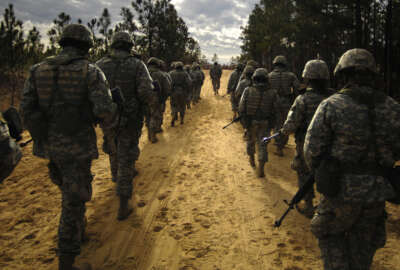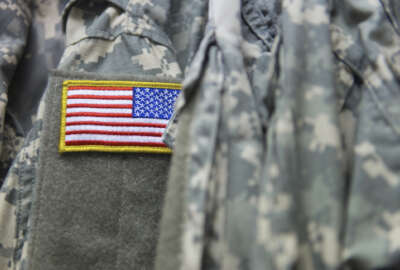
Military personnel are seeing the last effects of the drawdown
The number of people involuntarily separated from the services is trickling to a halt.
Subscribe to Federal Drive’s daily audio interviews on iTunes or PodcastOne.
The military drawdown is trickling to a stop as involuntary separations from the Army and Air Force hit minimal numbers last year.
In reports sent to Congress by both the Army and the Air Force, a total of 17 soldiers and 0 airmen were forced to leave the military because of cuts imposed by law.
“The Air Force conducted no involuntary separation programs in [2017], as there were not force reduction requirements,” the Air Force’s report to Congress, signed by Deputy Chief of Staff for Manpower, Personnel and Services Lt. Gen. Gina Grosso.
Likewise, the last of the Army’s involuntary separation programs related to drawdown are drying up as well.
The 17 soldiers who were separated in 2017 followed the pattern similar to previous cuts. The soldiers cut spent many years in the service and at least two years deployed in overseas operations.
Eight of the soldiers separated had 20 years of experience; one had 28 years of experience. All of the sosoldiers separated had at least 15 years in the Army.
The specialties of the soldiers separated ran the gamut. Some were military police, four were logistics officers. A signals officer and an armor officer were also separated.
As far as rank is concerned, seven were majors, nine were captains and one was a master sergeant.
The Army was trying to trim its active duty ranks from 490,000 in 2015 to 460,000 by the end of 2017.
That was reversed by Congress and the new Trump administration in the past two defense authorization acts.
The 2017 act stopped the drawdown and the 2018 law pushed the Army end strength up to 484,500.
Similarly, the Air Force tried to draw down its force to 310,900 in 2014. That has also reversed. The Air Force has been increasing its active-duty airmen end strength over the past couple years. The Air Force is authorized to grow another 4,000 troops in 2018, pushing its end strength to 329,000.
Still, the two services have been jettisoning troops over those time periods because some service members were already on a trajectory to be dismissed from the military as part of the drawdown.
The Army let go of nearly 700 soldiers in the second half of 2016. In 2015 and 2016, the Air Force let go of more than 1,100 airmen.
“The Air Force conducted no involuntary separation programs in [2015] and [2016], as there were no force reduction requirements. However, some members selected for involuntary separation as a result of 2014 force reduction efforts were not separated until” 2015 or 2016, the March 2017 report stated.
A majority of the cuts were taken out on airmen with 10 or more years of service. The average deployment time of the separated airmen was about 15 months.
The Air Force forced out about 350 lower level officers, the rest were mid-level enlisted airmen.
The service cut more than 6,000 airmen involuntarily in 2014 as a means of reducing the force.
Congress decided to reverse the drawdown due to a number of reasons. When the drawdown began the Islamic State had not been created and the United States was not as worried about threats from Russia and China.
Now that the United States is fighting IS, dealing with a more recalcitrant North Korea and trying to keep up with Russia and China, lawmakers felt increasing the size of the military was needed.
Copyright © 2025 Federal News Network. All rights reserved. This website is not intended for users located within the European Economic Area.
Scott Maucione is a defense reporter for Federal News Network and reports on human capital, workforce and the Defense Department at-large.
Follow @smaucioneWFED





